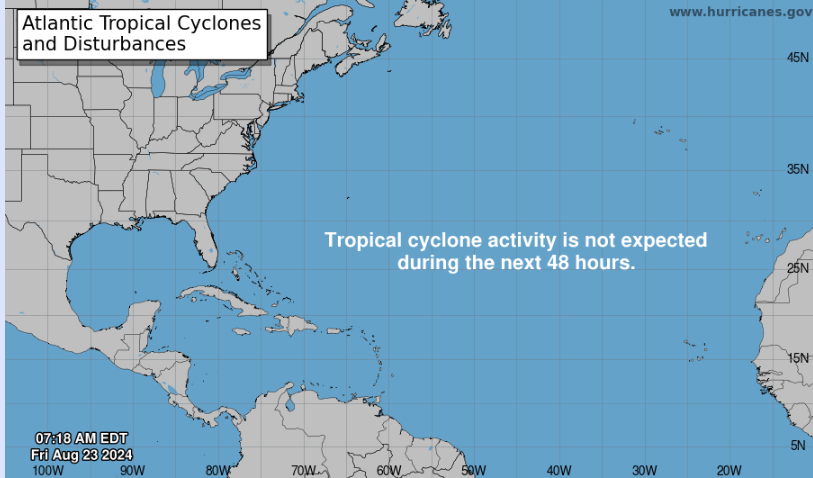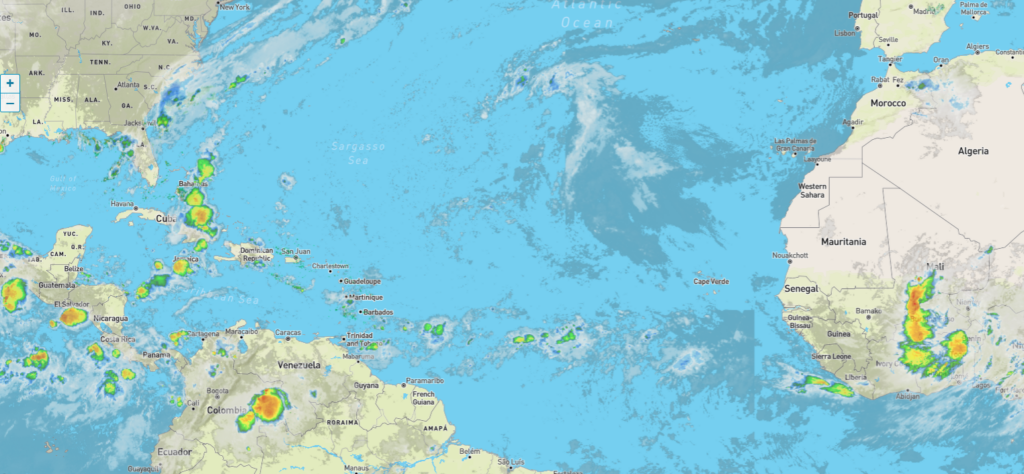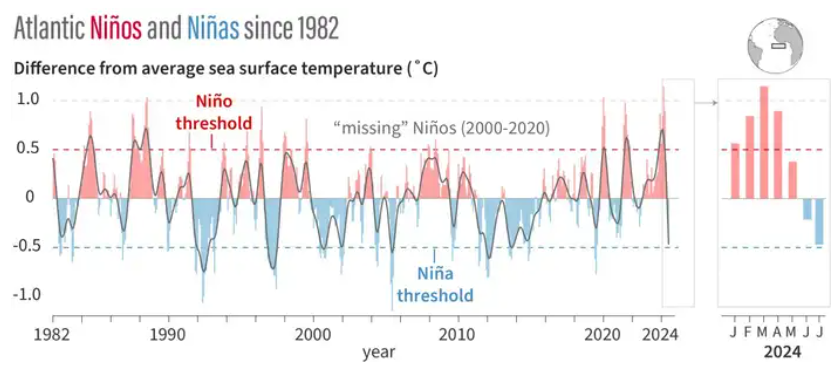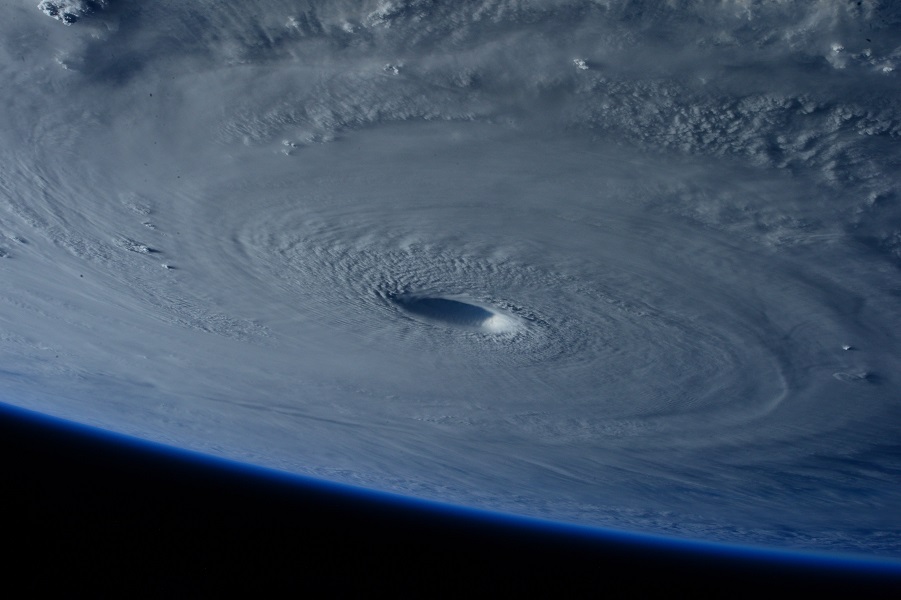Google tossed this bone at me the other day. “National Hurricane Center tracking 4 tropical waves as we near the peak of storm season.” The headline comes from TC Palm, serving South Florida (part of USA Today). As an observer and blogger, I was caught by such things. Holy crap, I thought, here it comes! I immediately searched the usual online resources and found … nothing. A trip back to the headline and then the article revealed that,
According to the weather service’s Wednesday, Aug. 21, advisory, no tropical cyclone activity is expected throughout the week, but the hurricane center did report there are four tropical waves in the Atlantic Ocean to monitor as we near the peak of the 2024 Atlantic hurricane season.
Florida has every reason to have an itchy trigger finger when it comes to late August and early September storms, but I felt cheated. This amounted to saying, “Yeah, it’s hurricane season, and the peak (Sept 10) is fast approaching, and look—weather!” Great. Wow.

There’s not much to see, or is there?

You can observe the conveyor belt that runs from the West Coast of Africa into the Caribbean, South and Central America, and up into the Gulf of Mexico or along the Eastern Seaboard. Any one of these handfuls of weather could develop into something dangerous. And peak hurricane season is fast approaching.
If the predictions are accurate, we’ll see some nasty business in the next six to eight weeks, but overall, the season has disappointed the Climate Cult. What appeared to be a fast start was the exception, not the rule in 2024. The promised god-like beating has yet to materialize. That conveyor was supposed to bring an almost weekly series of terrors from June to November, with more than two of them making landfall (so far) with far more energy than we’ve seen. The Pacific has been busy, but here we are, awaiting the promised Armageddon.
It might still come. Or not.
Part of the problem might be this: Part of the equatorial Atlantic, which happens to have its own La Nina/El Nino cycle, has cooled unexpectedly at a pace no one can recall reporting, ever. Rather than suggest this as proof that their climate models are crap, lazy journalists are leaning into the warm embrace of – “it must be your fault, sinner!”

As in the Pacific, the equatorial Atlantic saw unusually hot Niño conditions for much of 2023, and sea surface temperatures earlier this year were the warmest in decades. “It’s the latest episode in a string of events for a climate system that’s gone off the rails for a number of years,” says Michael McPhaden at NOAA.
Over the past three months, temperatures in that part of the Atlantic cooled off more rapidly than at any time in records extending back to 1982. This sudden shift is perplexing because the strong trade winds that normally drive such cooling have not developed, says Franz Philip Tuchen at the University of Miami in Florida. “We’ve gone through the list of possible mechanisms, and nothing checks the box so far.”
Off the rails is a tremendous stretch. The Atlantic data only goes back to 1982. This is the scientific equivalent of insisting, on Faith, that the world is only four thousand years old because the revered texts tell you so. 1982-2024 is a few years shy of the data required to suggest this is not normal. We know nothing about Mother Earth’s long-term habits in this area, less even than the rantings about the hottest, wettest, drying, stormiest anything. Millions or billions of years of activity are missing from a record whose Psalms and Hymns justify a mystery we are told not to question because it might mess with the funding.
The storms may yet come, but at no point does it appear likely that any of them have any idea about much of anything.
